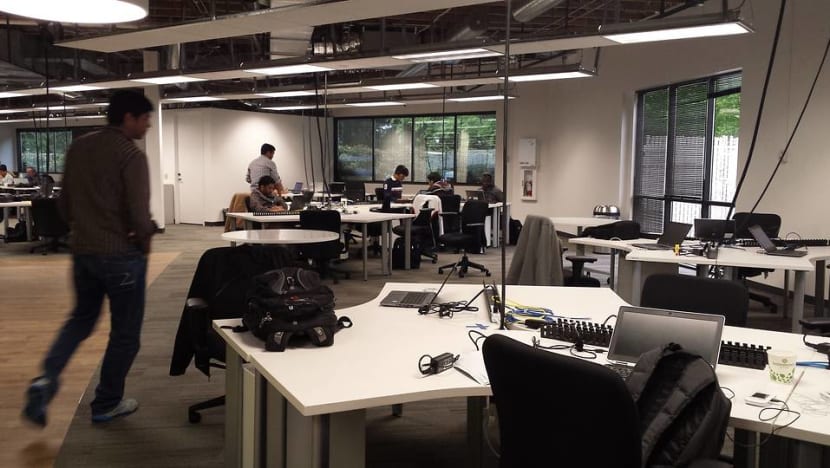commentary Commentary
Commentary: Hello COVID-19 remote working, goodbye cult of presenteeism
The coronavirus-fuelled leap to remote working will overturn the cult of presenteeism, say Carys Chan and Shea Fan.

(Photo: Pexels/Vlada Karpovich)
MELBOURNE: The COVID-19 pandemic has unleashed the biggest work–life social experiment ever.
Early this year, millions of employees were suddenly told to work from home, and managers had to learn how to manage all staff members virtually for the first time.
In Australia, where we reside, a recent Gartner survey revealed 88 per cent of organisations have encouraged or required their employees to work from home due to COVID-19.
In Singapore, the Ministry of Manpower (MOM) has mandated for employers to facilitate remote working as far as possible to slow the spread of COVID-19.
Interestingly, for all the talk about remote working testing whether IT systems can keep up, the real test the pandemic has put on us is whether human beings can be kept in check. It has called into question so many managers’ preference for presenteeism.
Presenteeism generally refers to that unproductive attendance at work, when employees work long hours or show up for work despite feeling sick or distracted.
The mass transition to work-from-home has shown most firms can make the leap to remote working entirely, but seemed to have put that off until the pandemic struck. Why is that so?
READ: Commentary: COVID-19 could make remote working a permanent feature. That has several implications for firms
READ: Commentary: COVID-19 is reshaping what work looks like
LACK OF TRUST FUELLING PRESENTEEISM
The biggest worry managers have, whether they admit it or not, is that their team members might be skiving off instead of pouring every minute into work.
Managers worry that employees may not have enough self-discipline to engage in their work at home. By contrast, some feel a sense of control when they see their employees in the office. They also believe their presence would keep employees on their toes.
But that sense of control has offered nothing but false security and can even be incredibly counter-productive. Requiring employees to come to the office just to monitor them has been shown to lead to presenteeism, which will cost organisations in Singapore a whopping S$7.6 billion by 2030, according to a 2018 report by Marsh & McLennan Insights and Mercer.

Further, being in the office does not necessarily translate into higher productivity. We forget employees are social beings. We all engage in some form of non-work-related activity in the office, whether browsing the news, writing private e-mails, engaging in long tête-à-têtes at the pantry, or heading out of the office multiple times a day to grab food or coffee.
An employee we interviewed for our research on work–life balance even shared how the distractions in the office were worse than those she experienced at home.
She recalled how one of her colleagues going through a break-up had spent hours talking about her relationship problems with other colleagues. Even though our interviewee was not directly involved in the conversation, she was distracted for hours and could not focus.
READ: Commentary: Putting in 50 hours while WFH, it’s a struggle to draw the line between work and home
READ: Commentary: Let’s face it. Zoom meetings are exhausting
A 2020 Airtasker survey involving 1,004 full-time employees in the US also showed while remote workers spent more time taking breaks throughout the day, they also devoted more time on work tasks than office workers, debunking the myth that remote working leads to reduced focus and work performance.
ARE EMPLOYEES REALLY MORE COLLABORATIVE AND INNOVATIVE IN THE OFFICE?
In 2013, Yahoo’s then new CEO, Marissa Mayer, famously banned employees from working from home. She defended her decision by stressing that “people are more collaborative and innovative when they're together face-to-face”.
Undoubtedly, there are benefits to working in the same physical location. Spontaneous personal encounters can spark ideas and brainstorming in person can lead to fresh thinking. There’s something about meeting in person since employees can read other employees’ non-verbal cues.

Then again, with advanced communication technologies today, employees can also reach out to colleagues via a video call if they need to communicate in person and instantly.
The pandemic has also shown people can work creatively and collaboratively without any face-to-face interaction. Just think of the many singers and musicians who have banded together for performances livestreamed on various social media platforms.
The reality is, for collaboration and innovation to take place, an organisation’s culture and leaders are a lot more important.
READ: Commentary: COVID-19 has stripped work to bare bones - was all that excess needed anyway?
READ: Commentary: The time of introverts has come as firms ramp up work-from-home arrangements
Many studies have shown a shared vision and open learning culture fostered by visionary leaders can be highly effective in encouraging knowledge-sharing and the collective working towards common goals, regardless of where workers physically are.
FOR SOME EMPLOYEES, PRESENTEEISM SIGNALS COMMITMENT
Presenteeism has its root in cultures which endorse time spent in the office as a sign of diligence and commitment.
Nowhere is this more apparent than in Japan, where employees are often reluctant to leave the office before their colleagues or managers to show that they are hardworking and dedicated to their jobs. It is not uncommon for Japanese employees to clock in more than 80 hours of overtime each month.
Presenteeism is also more common among young employees. Many climbing the career ladder tend to link being present at work with the prospect of promotion, or to show they are busy and important.
But the bad news is they also tend to lose more productive hours due to presenteeism.
PRODUCTIVITY CAN BE ACHIEVED AT HOME
Contrary to popular belief employee productivity falls when they are away from the office, a study by a group of Stanford University and Peking University scholars found a 13 per cent increase in productivity for employees working from home, with scores given by both managers and employees.

Increased productivity and better prioritisation of work tasks are also emerging as advantages from the COVID-19 remote working arrangements, looking at how people are reacting.
A study conducted by one of us found employees overwhelmingly favour a flexible work arrangement in which they can blend their work and familial responsibilities.
Interestingly, those studied did not confine themselves to a strict 9am to 5pm office routine, but experimented with their most productive hours, and attended to their personal and family needs as and when they arose.
At the end of each work day, they also felt a sense of satisfaction as working from home enabled them to be involved parents, yet also good colleagues to their managers and colleagues.
READ: Commentary: Not enough time? Transforming work and sleeping better in a digital world
READ: Commentary: The battle over office leave has been worsened by the coronavirus
THE POST COVID-19 NORMAL – AN END TO PRESENTEEISM?
In countries where flexible working arrangements were already prevalent before COVID-19, presenteeism will be further shaken post-COVID-19 as managers and employees find remote working desirable for all these reasons.
However, we do not expect a seismic shift where the majority of workers will start working from home entirely. There are frontline, operational essential activities (e.g. events, workshops and teaching) and services (e.g. retail, healthcare, tourism) that require on-site presence.
Where the coronavirus shift towards work-from-home has forced organisations to enhance their IT infrastructure, which will make flexible working a lot more reliable going forward, some corporations may even reduce their office footprint over the long term as fewer employees spend time in the office.
READ: Commentary: How not to be a Zoom bore
READ: Commentary: How Zoom-working will change companies forever
In countries where presenteeism is highly ingrained in the culture, the COVID-19 lockdown may not be strong enough to rewrite ingrained cultural norms, which can be reinforced once old working arrangements revert, and peer pressure and managers who confuse presenteeism with commitment and work performance hold sway.
Still, we expect a change in attitudes towards face time. Managers and employees who previously endorsed or engaged in presenteeism are likely to be more open to remote working.
People may also embrace the social aspects of work more – with dress-down codes throughout the week.
We urge managers to take a leap of faith and give employees the autonomy to work wherever they want. Focus not on monitoring performance but on improving task allocation and how your team can achieve their best.

At the same time, we encourage employees to negotiate with their supervisors to see what gains remote working can be carried over. Initiating discussions with managers to adjust their tasks and responsibilities to suit new blended working arrangements could be a good start.
Lastly, we expect greater support from governments all over the world to reduce presenteeism as it will ease congestion during peak hours since fewer employees have to commute to work.
If countries and organisations around the world embark on widespread structural changes to reduce the reliance on face time at work, employees, their families and communities will reap the benefits of improved health and well-being from a happy and productive workforce.
LISTEN: Disruption 101: How COVID-19 is revolutionising work
BOOKMARK THIS: Our comprehensive coverage of the coronavirus outbreak and its developments
Download our app or subscribe to our Telegram channel for the latest updates on the coronavirus outbreak: https://cna.asia/telegram
Carys Chan is a Lecturer in Management at RMIT University. Shea Fan is a Senior Lecturer in International Business at RMIT University.
















